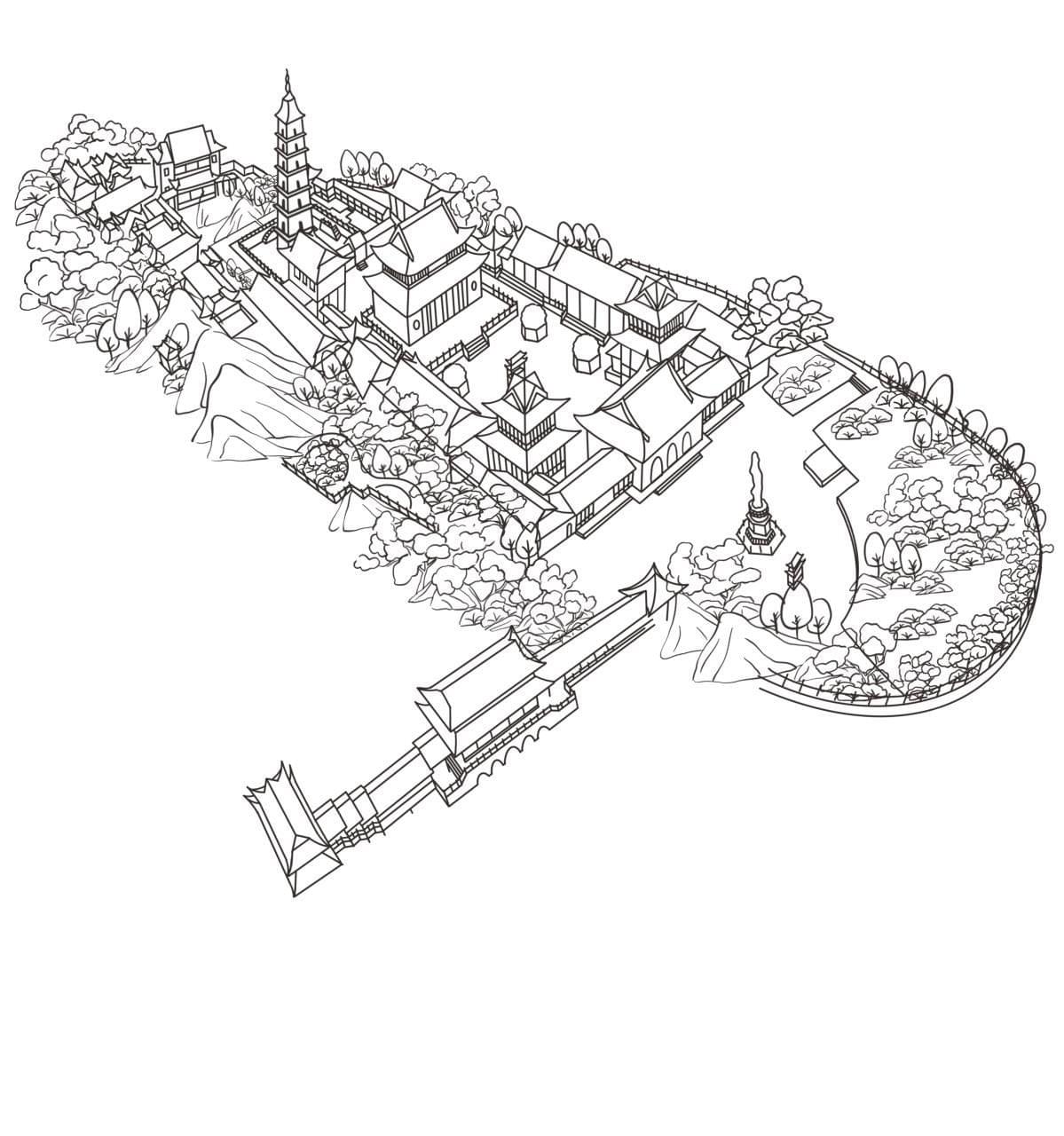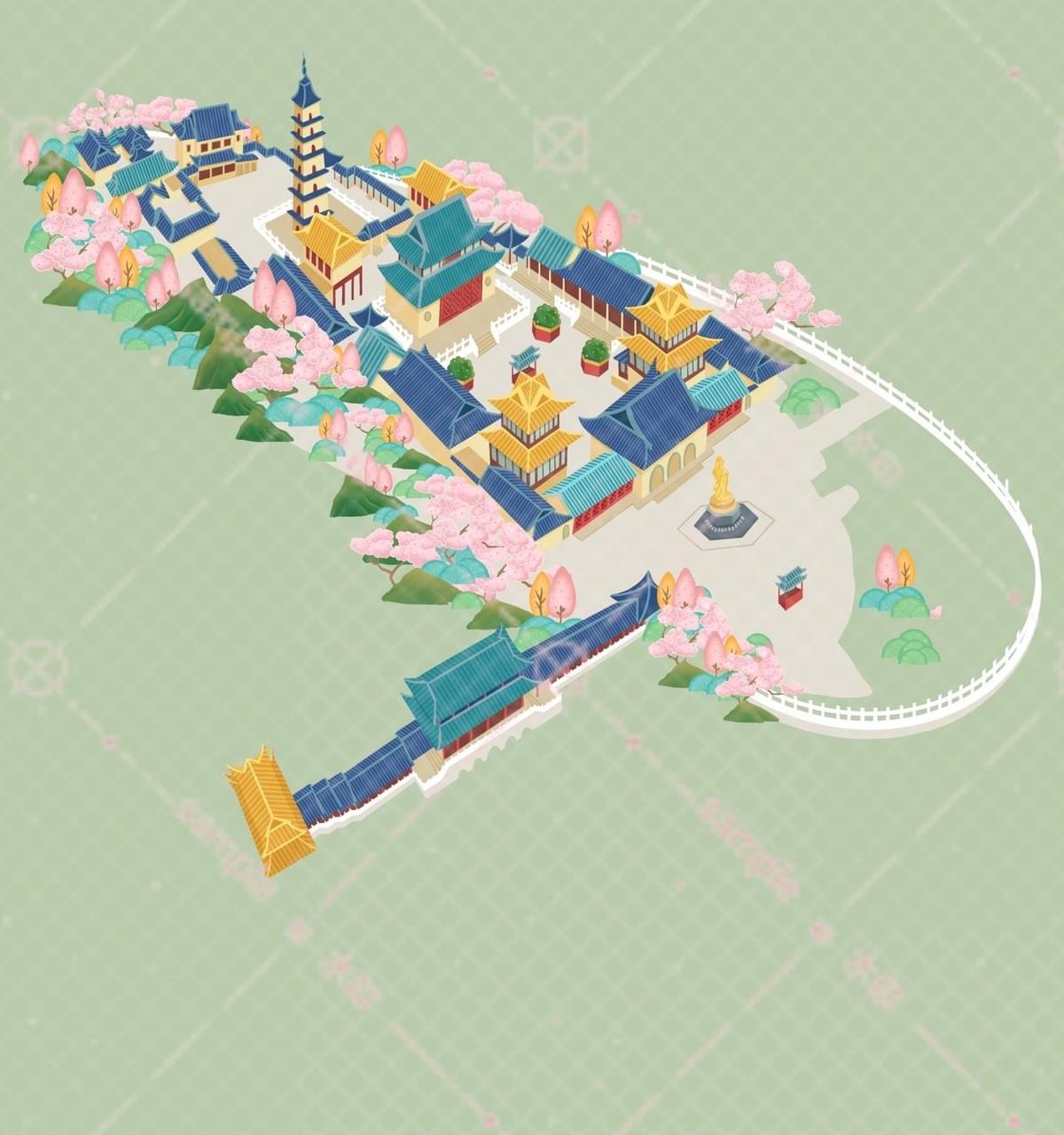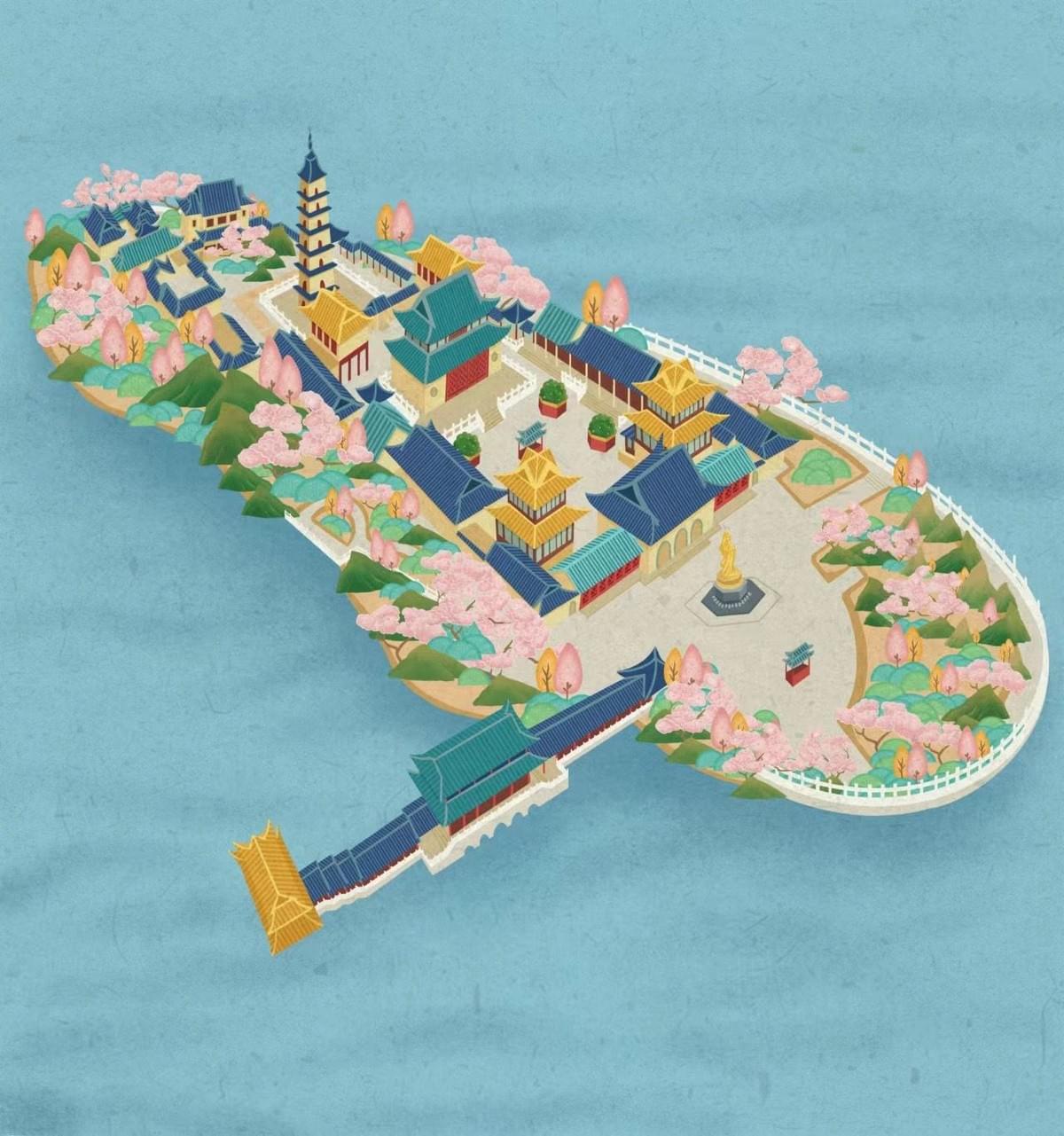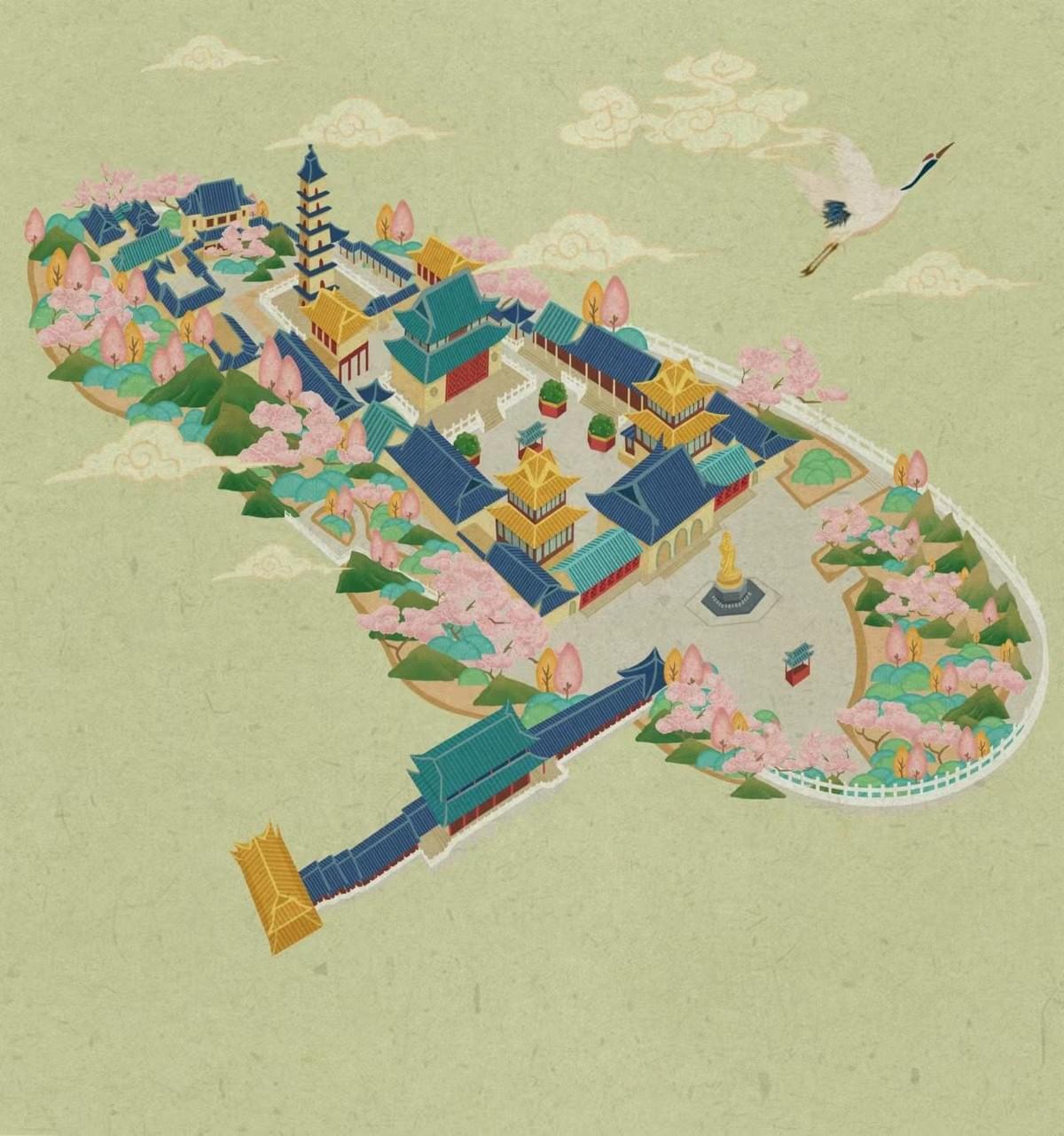Introduction
In the realm where artistry meets cultural preservation, the illustrated map stands as a unique medium that bridges aesthetics and utility. When the Mapful.art team was commissioned to create a hand-drawn map of the historic Zhenguo Temple—a UNESCO World Heritage site dating back to 963 CE—they embarked on a journey that would blend traditional Chinese artistic techniques with modern cartographic precision. This post offers an exclusive behind-the-scenes look at how this extraordinary cultural artifact came to life, transforming centuries of architectural magnificence into a tangible keepsake for visitors and enthusiasts alike.
The Client Brief: Capturing Ancient Splendor
The project began with a clear vision: to create an illustrated map that would not only guide visitors through the physical space of Zhenguo Temple but also immerse them in its rich cultural heritage. The client specifically requested a visual representation that would:
- Showcase the temple's unique architectural layout in a visually appealing way
- Highlight key historical elements of the temple complex
- Incorporate traditional Chinese artistic elements while remaining accessible to international visitors
- Feature the seasonal beauty of cherry blossoms surrounding the temple grounds
- Provide a memorable visual keepsake that transcends the typical tourist map
This delicate balance of practical functionality and artistic beauty set the stage for a meticulous creation process that would honor one of China's most precious cultural landmarks.
Research and Initial Concept Development
Diving Deep into History
Before putting pen to paper, the Mapful.art team conducted extensive research into multiple facets of Zhenguo Temple:
- Historical significance as one of China's oldest surviving Buddhist temples
- Architectural uniqueness, with particular attention to the renowned Wanfo Hall (Ten Thousand Buddha Hall)
- Traditional layout including the Hall of Heavenly Kings, Drum Tower, and Bell Tower
- The surrounding natural landscape that frames this spiritual haven
- Cultural and religious symbolism embedded in the temple's design
This research phase was crucial in ensuring historical accuracy while identifying the key elements that would make the map both informative and visually compelling.
From Knowledge to Sketches
Armed with comprehensive knowledge, the artists began creating preliminary sketches that approached the temple from an aerial perspective. This viewpoint was strategically chosen to:
- Provide clear spatial relationships between buildings
- Allow visitors to easily navigate the complex
- Showcase the symmetry and harmony inherent in traditional Chinese temple design
- Present the entire site as a unified cultural landscape
Artistic Style Selection and Refinement
Blending Tradition with Accessibility
For a site steeped in history, selecting the appropriate artistic style was paramount. The team ultimately chose an approach that harmoniously blended:
- Traditional Chinese painting techniques (工笔画) known for precise, delicate lines
- Classical architectural illustration principles to maintain structural accuracy
- A soft, muted color palette reminiscent of ancient Chinese artwork
- Textured background effects echoing traditional rice paper
- Decorative elements from Chinese art, including auspicious clouds (祥云)
The inclusion of a flying crane—symbolizing longevity and wisdom in Chinese culture—added a subtle layer of cultural significance that complemented the temple's spiritual essence.
The Detailed Illustration Process
Architectural Precision
With the foundational approach established, the artists proceeded with meticulous attention to detail:
Layout Mapping
The team precisely plotted each architectural element according to its actual spatial relationship, creating an accurate representation of the temple's layout while maintaining artistic harmony.
Architectural Rendering
Each building received detailed treatment highlighting distinctive features:
- The elegant blue-tiled roofs of the main halls
- Gold-topped pavilions reflecting imperial patronage
- The commanding presence of the multi-tiered pagoda
- Weathered stone walls that have protected the complex for centuries
- Traditional entry gates marking important thresholds
Environmental and Cultural Elements
To breathe life into the illustration, the artists incorporated:
- Delicate cherry blossoms encircling the temple grounds
- A golden Buddha statue positioned within the central courtyard
- Decorative potted plants in traditional Chinese planters
- Prayer flags and ceremonial details that hint at ongoing spiritual practices
- Stylized clouds and a serene green background that evoke tranquility
These elements transformed a simple architectural rendering into a vibrant representation of living heritage.
Digital Refinement and Final Delivery
Honoring Tradition in the Digital Age
While maintaining the authentic hand-drawn aesthetic, the team leveraged digital tools to:
- Fine-tune color balance for visual harmony
- Ensure perfect representation of architectural proportions
- Add subtle textures mimicking traditional painting surfaces
- Incorporate client feedback without compromising artistic integrity
The iterative process continued until the perfect balance was achieved—a map that was both practically useful and aesthetically beautiful.
Conclusion: A Cultural Bridge
The completed Zhenguo Temple map stands as a testament to the power of thoughtful illustration in cultural preservation. Far more than a simple navigational tool, this hand-drawn creation:
- Bridges the gap between historical documentation and artistic expression
- Provides international visitors with an accessible entry point into Chinese architectural heritage
- Preserves in visual form the essence of a thousand-year-old cultural treasure
- Honors traditional Chinese artistic practices while serving modern needs
In an age of digital mapping and GPS navigation, this meticulously crafted illustration reminds us that some experiences—like exploring the hallowed grounds of Zhenguo Temple—deserve to be savored through the lens of human artistry. The Mapful.art team's creation doesn't merely show visitors where to go; it invites them to appreciate the journey through one of China's most precious cultural landmarks with the same reverence as those who have walked its paths for over a millennium.




